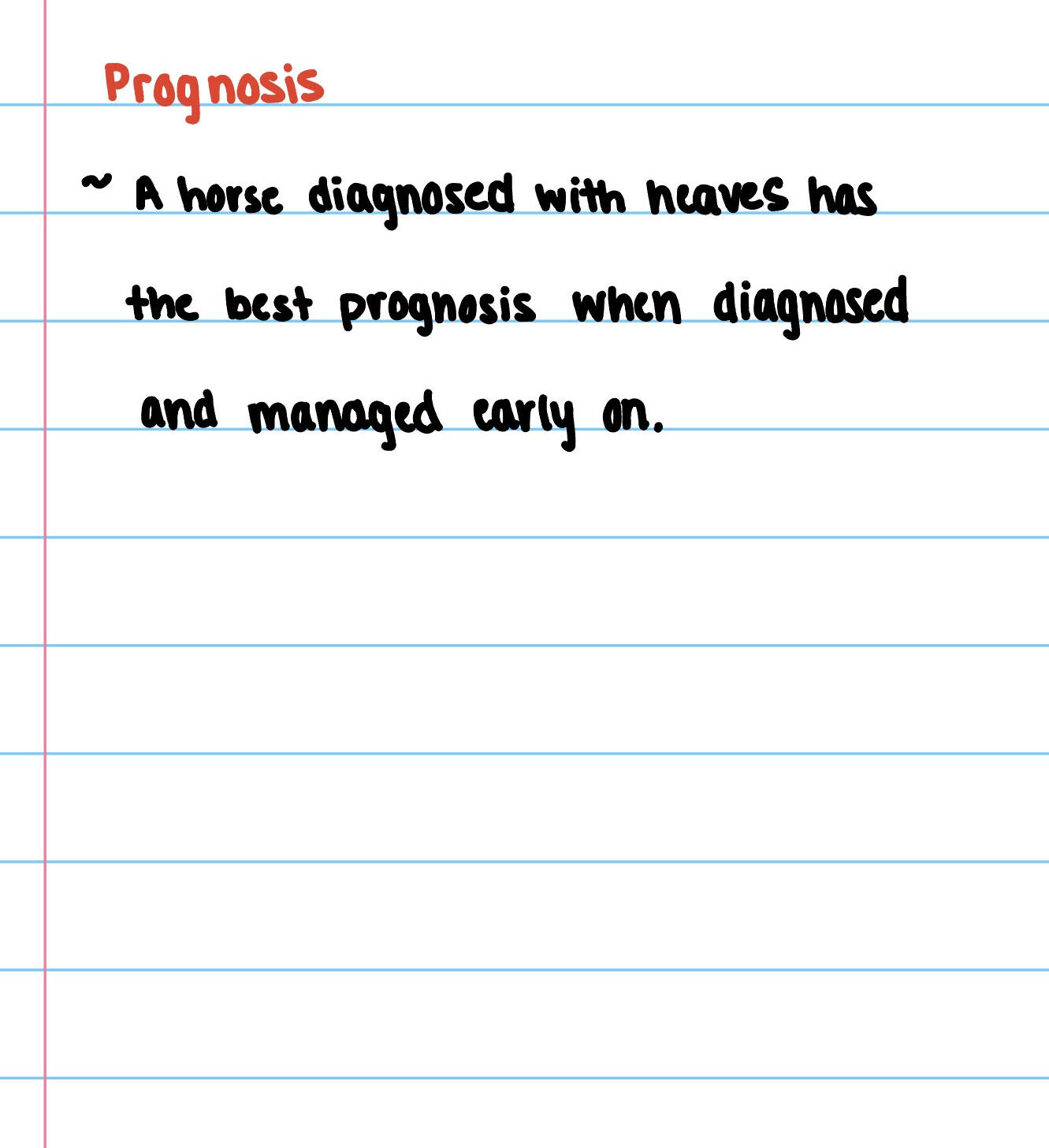What is heaves?
Heaves is the most common respiratory condition that affects horses. Heaves is characterized by inflammation, thickening, and narrowing of the airways resulting in labored breathing, coughing, and excess mucus in the airways. It is a chronic disease that usually first arises in horses around 9-12 years old.

Diagnosis of heaves
Diagnosis is based on clinical signs, history, and ruling out other diseases that can have similar clinical signs as heaves.
Other diseases that can look like heaves
- Pneumonia
- Respiratory virus
- Pleural effusion
- Pulmonary contusion
Causes of heaves
Heaves is most commonly caused by an allergic reaction to inhaled environmental allergens. Some common environmental allergens are dust and mold from hay and straw. Hot and humid climates can also be a contributing factor for flare-ups of heaves.
Is your horse showing signs of heaves?
- Increased respiratory rate and effort
- Nasal flaring
- Chronic cough
- Wheezing
- Exercise intolerance
- Nasal discharge

Long-term Management
There is no cure for heaves, so long-term management is necessary to reduce clinical signs and flare-ups. The main method of management for heaves is decreasing allergen exposure.
Environmental management: Environmental changes are unique to each case of heaves, but some common modifications are reducing dust exposure, increasing stall ventilation, soaking hay or feeding a pelleted diet, turning out for longer periods, regularly assessing hay for mold, and not using dusty stall bedding such as wood shavings or straw.
Medications:
- Corticosteroids
- Bronchodilators
Prognosis
The key to helping your horse live a healthy and comfortable life with heaves is early diagnosis and strict management of his/her environment and diet. When diagnosed early, horses with heaves have a good prognosis and chronic lung damage can usually be avoided. Diagnosis in a later stage of the disease could lead to a poorer prognosis due to irreversible lung damage and management of clinical signs is harder and more costly.
